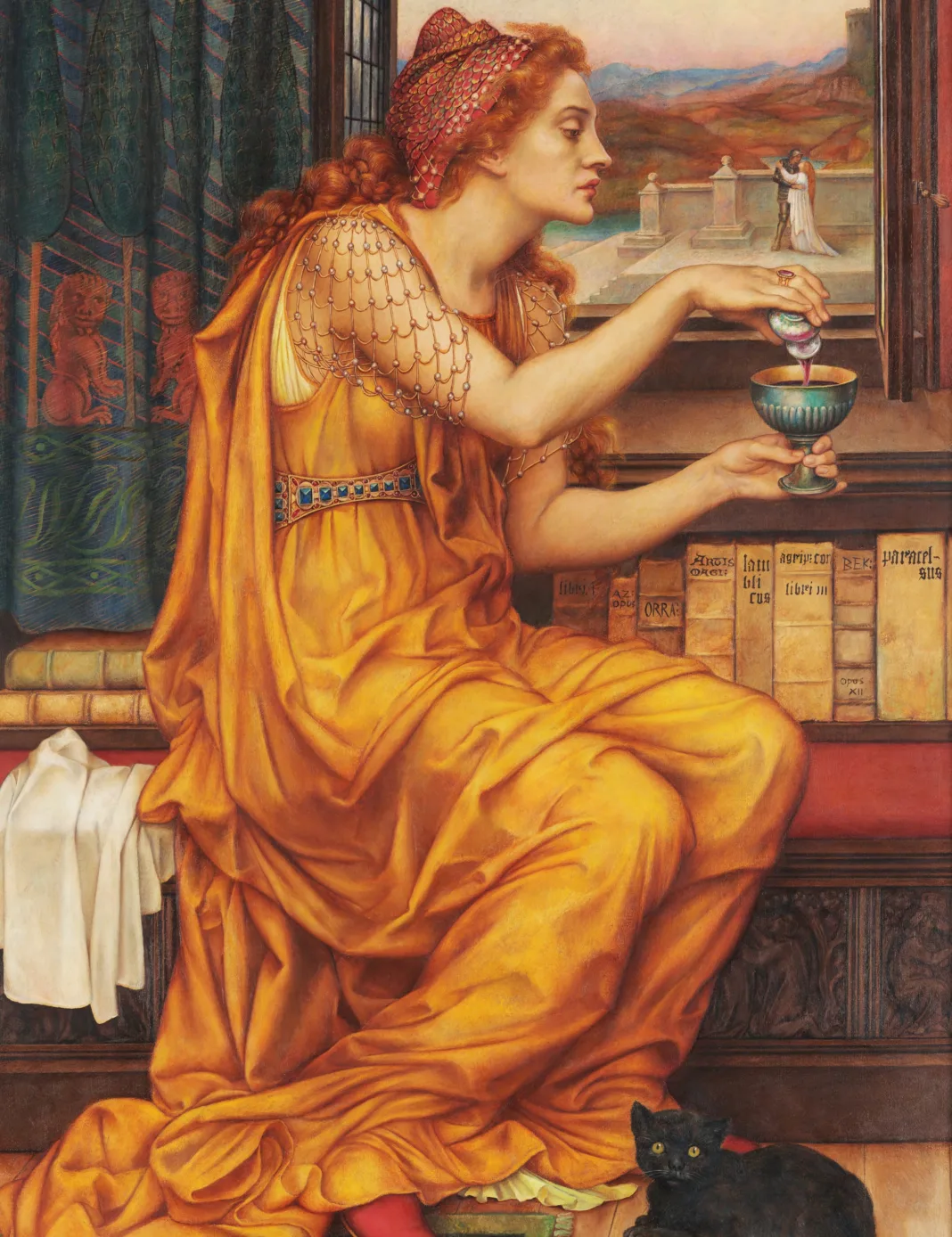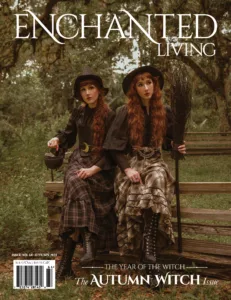You are a witch. That means an artist, a warrior, a healer, and a queen all at once. You are not like the rest of the village. Dare I say better than? Oh yes, I dare, because courage and confidence underlie all your powers: confidence
to see what needs doing, courage to act on it. Talent to do what needs to be done, fortitude to stand by the consequences.
Some powers you were born with and some you learned. Some are simply you, because there are as many ways to make a witch as there are kinds of witch to become: The cunning-woman in a humble croft, grinding herbs to poultice a neighbor’s blistering rash. The lady of the court, always ready with a quip for the salon, secretly working a glamour to present her face and figure as she imagines them. The solitary elder who no longer bothers with looks but instead spends her days writing incantations, her nights weaving them into a spell. And these are just the first archetypes; you have your own way of bewitching your life.
Despite many talents, the witch may be poor. She may even be in serious trouble from those villagers swarming over the hill with torches and ducking stools—but if times get dicey, it’s because her gifts can intimidate as well as nurture. (She also has a flair for a paradox.) Those who don’t have the gift within them might seek to destroy it in others, but you are ready for battle. Your magic binds you to the universe and to others like you, solitary wonder-workers who channel their strength into one another when needed.
So look to the stars and the pointy hat that rises to meet them: You have greatness within, and its seeds are growing.
Creativity, a clever tongue, talents for healing, glamour, solitude, sisterhood, resilience—all of these qualities stretch and grow and strengthen with use, so gather them up and move into that dazzling realm where anything is possible. The only limit is the bounds of your own vision.
Creativity
When you look in the mirror, a visionary looks back.The fundamental power of the witch is imagination. Your magic is about setting the world to rights, transforming wrongs into justice, squalor into beauty—creating love, health, happiness. (Or maybe you need to send a curse. We’re not judging; we’re sure you have your reasons.) Creating.
Sometimes a historic book or word of mouth will yield the perfect spell or charm ready-made for your situation. The weight of time and established use makes these spells strong … but sometimes you can do even better to create your own incantation to ramp up the magic. Stretching yourself imaginatively might yield a new go-to spell.
You’re a dab hand at using what’s around you, and you choose some ingredients by their resemblance to the object over which you want to cast a spell. For example, there’s no mystery as to how mandrake came to be used in spells having to do with sexuality. Just look at one of the roots; just look at the name. No wonder it has to be harvested at dark of midnight, tied to a dog who will pull it screaming from the earth. You don’t want to mess with that metaphor, but you might tie the root to a string and hang it around the neck of a woman who’s trying to get pregnant.
In other charms of similarity, you put a knife under a mattress to cut the pain of childbed. And traditionally, if you live around the Mediterranean and you find your Italian suitor a little too insistent, you can tie a rope or string into a knot, reciting words to the effect that the man will not be able to act upon his desires. And there you have it, a good night’s rest for you.
There are plenty of enchantments available for stirring desire—which, incidentally, the authorities viewed as more witchy (meaning possibly malevolent) than anything that would repress lust. Good one: Gather fern seeds on Midsummer’s Eve and scatter them while reciting the lovers’ names. Tried and true: Send the beloved a mala noche, a sleepless night in which to think of you. You might find this chant to be handy: “The bed in which you lie shall be made of thorns, your sheets made of nettles, and from below you will hear the whistles of a thousand strange creatures.” This trick never fails: Whatever you’re cooking for a reluctant lover’s dinner, include a few drops of your blood.
Good-sense caution: Until you know the strength of your own love magic, be sure to keep the string handy. Just in case.
A Clever Tongue
Words always strengthen your magic, even if you’re just reciting a grocery list for the bean soup that brings luck to the cook. The right incantation brings out the powers within the objects.
Although the raw curse above has sent many a mala noche to its destination, some people believe a spell is most powerful when it’s made with poetry. As a witch, you are likely a natural rhymer.
Take Macbeth’s weird sisters, for example. They grab sinisterly random objects for a brew to summon the souls of the dead, and they bind everything together with a rhyme:
Double, double toil and trouble;
Fire burn and cauldron bubble.
Fillet of a fenny snake,
In the cauldron boil and bake.
Eye of newt and toe of frog,
Wool of bat and tongue of dog,
Adder’s fork and blind-worm’s sting,
Lizard’s leg and howlet’s wing,
For a charm of powerful trouble,
Like a hell-broth boil and bubble.
The rhyming similarities between words help bind the ingredients together. But this most famous incantation is not just about piling on the grisly sounds; it also shows how the chemistry of the ingredients will work. When they “Cool it with a baboon’s blood,” they know that “Then the charm is firm and good”—in short, blood is a thickener that will finish off the brew.
Incidentally, if you fear that someone might serve a nasty concoction to you someday, plant a cyclamen near or in your home. The Roman naturalist Pliny the Elder wrote that where cyclamen grows, poisons are powerless.
A simpler, sweeter rhyme is part of an old charm to bring a lost lover back. To work this one, you need a sprig of oak with an acorn attached, plus a sprig from an ash tree. Put them under your pillow for three nights, chanting:
Acorn cup and ashen key, Bid my true love come to me.
Incantations you create for yourself are often the strongest, because they are unique to you and your circumstances. So while you may take inspiration from traditional spells and charms, you have full creative license to add your own flourishes and make up your own words. Or start from scratch and make a magic entirely your own.
If you have no spells to write down now, try keeping a diary. What you see in those pages may help you divine your next project. And for inspiration, try wearing or holding tourmaline, a crystal that comes in all shades and colors. Green is particularly potent for artists and wordsmiths.





























 Enchanted Living is a quarterly print magazine that celebrates all things enchanted.
Enchanted Living is a quarterly print magazine that celebrates all things enchanted. 
